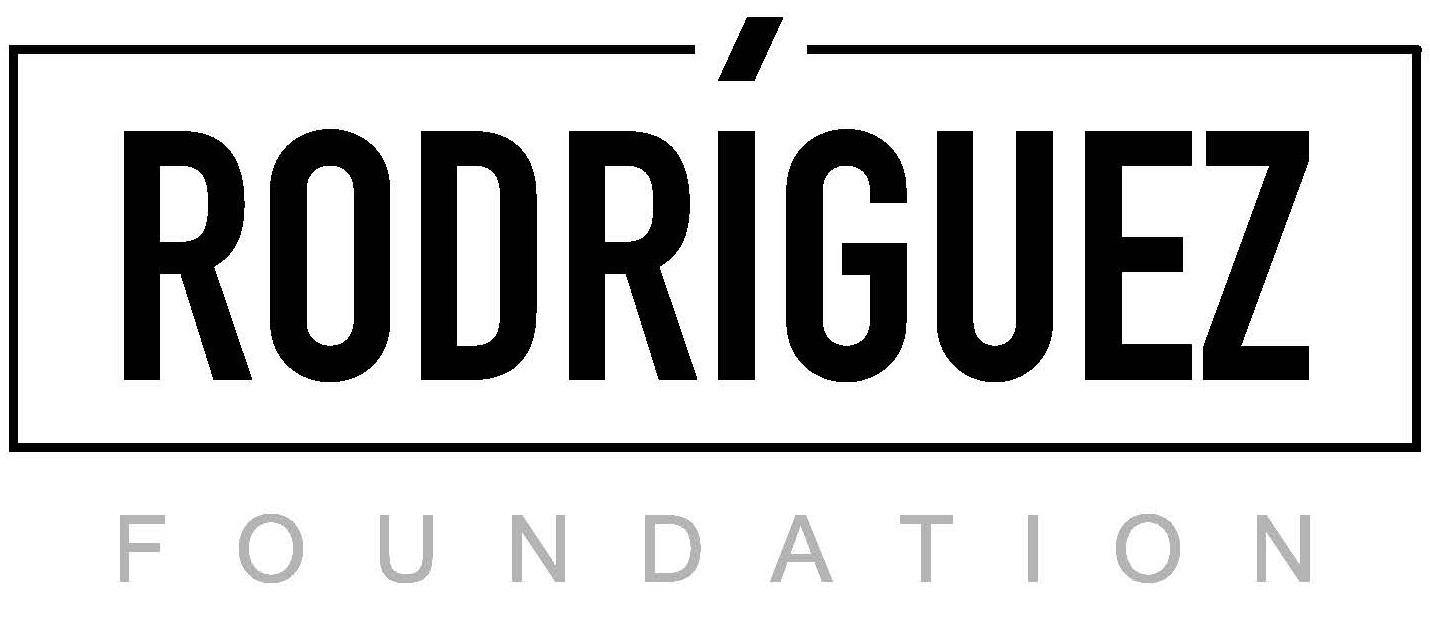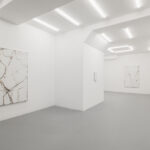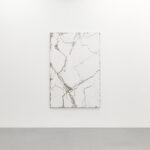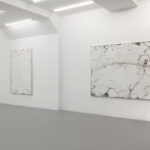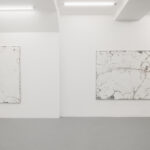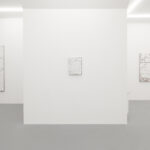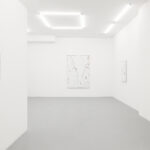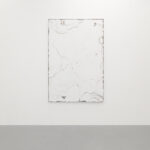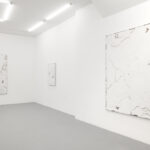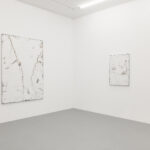Keke Vilabelda
A Sudden Crack!
17.03 - 19.04.2023
This text is an attempt at exploring the poetics of A Sudden Crack!, the new exhibition of Keke Vilabelda (Valencia, Spain, 1986). Our gaze does not remain unharmed from its contemplation: we suffer a visual short-circuit, vibrant and strange, that leads us to ask what exactly we are looking at. If we look closely at details, we discover surfaces made of cement and plaster modulated with methods from different disciplines: painting, with techniques of controlled randomness; sculpture, with tactile stimuli that bring volume and evoke manual traces; also, photography, with an especially complex origin: a digital print of complementary colours, blue and red, offers visual information that, in spite of its flatness, is perceived as volumetric.
Apart from Vilabelda's mastery in mixing techniques, the core of those works resides in their own conceptualization as images of uncertainty, blurred appearance, and surrounding aspect. The artist's intention is not to satisfy our gaze, but rather to modify our contemplative petrification and lead us from the centre to the periphery, in a nomadic roam. When we talk, Vilabelda explains to me that his works stem from a parallelism: a physical accident - the crack; a digital accident: the glitch, the intentional or unexpected error. In order to represent those phenomena, he revisits the concept of "formlessness" (l'informe) described by Bataille as something that disconcerts us, because it refuses to take on a precise form.
The surface of the painting is articulated through cracks, grooves and fractures, the same tools that were used by Tàpies to pictorially emulate the passage of time. But if the Catalan artist used those resources from an evocative stance, Vilabelda's strategy is different. On the one hand, the accident as such is the protagonist here, as a visual incident: its strange beauty, always outside of any canons, operates as the primary stimulus for artistic explorations. On the other hand, the genealogy of these artworks does not have informalist character, but rather drifts towards the ethereal and weightless. To perceive it, it is indispensable to position the viewer in front of the artwork, because photographs are barely able to document this kind of visuality, between the material and immaterial, transcending the limits of the medium itself.
A Sudden Crack! responds to various kinds of reading: as fragments of natural landscapes, perhaps melting ice blocks. They can also be seen as amplified details of deteriorating urban architecture. Nonetheless, we should not forget the aspect of vanitas, the baroque genre drawing people's attention to transience and mortality. The surface of these works has a floating character, like the blurred stain from Hans Holbein's The Ambassadors (1533), whose actual form - the skull - can only be perceived from the right angle, looking from the painting's edge. Moreover, Vilabelda wants us to miss the gesture, to force our eyes and to escape the tyranny of "pleasing" and of "I like it".
With this exhibition, Vilabelda has developed an antidote to the urgency, to the technological paradigm based on instant understanding and the illusion of unique time. His exquisite paintings (made using very little paint) present a horizon that is difficult to inhabit, as it is constructed from a temporality of resistance. This is, perhaps, the biggest find in these works: in times of absolute "digitalization of Self", Vilabelda offers a more humane rhythm to our eyes, one that can linger on blind spots, on lapses, doubts, cracks and intensities.
Carlos Delgado Mayordomo. Art critic
